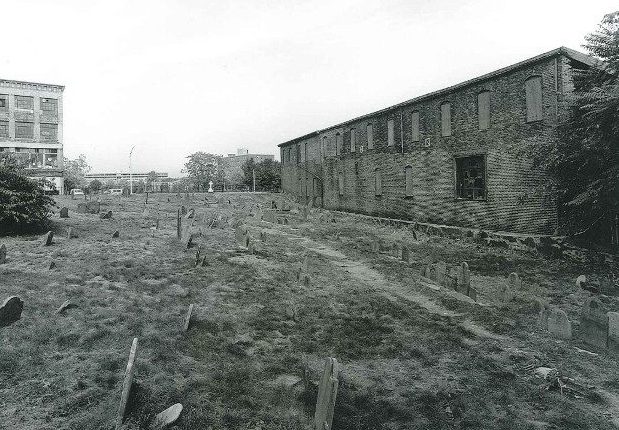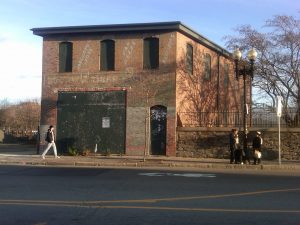
October 31, 2016 At the Crossroads of History; A New Look at Roxbury’s Owen Nawn Factory
HBI has commissioned the architectural firm Mass Design Group to conceive of design options and interpretive ideas for the long overlooked Owen Nawn Factory across from HBI’s headquarters at the 1859 Eustis Street Fire House, and at the corner of Melnea Cass Boulevard and Washington Street in Dudley Square.
Anticipating the Boston Planning and Development Agency’s forthcoming Request for Proposals for Parcel 8 in Roxbury, HBI is revisiting this long-empty Nawn Factory at 2030 Washington Street, a structure that dates to the 1880s and is a reminder of Roxbury’s industrial past. A two-story brick commercial structure, it is named for its owner, Owen Nawn, a Roxbury contractor who was also built some of the elevated Orange line along Washington Street in 1901.
The Nawn Factory and its prominent location help tell the story of Roxbury’s evolution and growth, particularly as Dudley Square begins to experience a wave of new development. In the 17th and 18th centuries, this site was located along Roxbury Neck, the only land route between Roxbury and Boston, and would have witnessed action during the Seige of Boston when coloni al Bostonians established a military redoubt near present-day Eustis Street.
al Bostonians established a military redoubt near present-day Eustis Street.
As it stands today, the Nawn Factory is only one-third of the building’s original size. In the 1990s, after the community’s vision of a visitor center there for the Roxbury Heritage State Park faltered for lack of State resources, fire and deferred maintenance undermined the rear of the structure which was then removed. However, there have been important efforts to recognize and preserve this historic area of Dudley Square including its designation as an Architectural Conservation District by the City in the 1980s, the considerable investments in the 1630 Eliot Burying Ground by the Boston Parks Department, and HBI’s rehabilitation of the adjacent 1859 Eustis Street Fire House in 2011.
“HBI and MASS’s shared aspirations for this site leverage the neighborhood’s history in order to strengthen community identity and create economic opportunity for Roxbury residents today,” says Mass Design?s project architect, Alicia Ayayi. If we’re successful, this historic place will be a source of pride and inspiration for generations of Roxbury residents to come.



